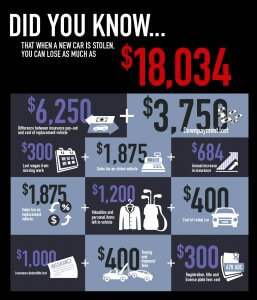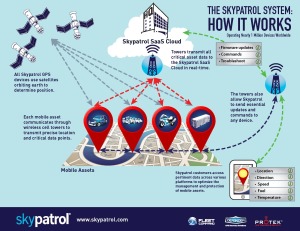Seeing is Learning: The Basics of a Great Infographic
Our society’s inability to unplug from technology and demand for instant gratification mean the attention and time we can dedicate to even the simplest tasks are decreasing. Even reading factual articles on the Internet is too time-consuming for us! Content shock, as we touched on earlier, is a phenomenon where readers skip reading articles in full because they are bored, busy, or disinterested. So how do we present information to readers that interests and helps them learn? Enter infographics: content that combines text and graphics into one. Could infographics solve the problem of content shock, or is it just a temporary fix to our society’s short attention span?
Visualize
Content marketers and companies alike create infographics to convey boring material in a quick, creative and meaningful manner. According to Social Media Consultant Mark Smiciklas, infographics are “a visualization of data or ideas that tries to convey complex information to an audience in a manner that can be quickly consumed and easily understood.” Remember the five senses: feel, smell, see, hear and taste. All 5 senses transmit information to the brain, but 90% of that information is visual! In an average day, a person is exposed to 174 newspapers full of information, with only 1% of that information getting through to the brain. Why is this, you ask? The brain processes images simultaneously and text sequentially, meaning that visual stimuli makes it to the brain much more quickly than textual stimuli. To be specific, the brain processes visual stimuli 60,000 times faster than text. Additionally, Google search volumes for “infographics” have increased by well over 800%. I prefer to think of infographics as children’s books for adults: mostly picture accompanied by minimal text. We teach and treat children as visual learners, so why can we not do the same for adults?
Inspire
Great infographics inspire emotions – be it happiness, sadness, wonder, or surprise. Great infographics use challenging content, tell a story, take your readers on a journey, or provide readers with a fresh point of view. As a marketing tool, infographics are viral magnets. They are easy to share due to their attractiveness and versatility across social media platforms including Facebook, Twitter, and Pinterest. Because of their viral magnetism, infographics are helpful to your webpage’s SEO and can ultimately help rank your website higher on Google’s algorithm. You can also easily increase brand awareness by simply placing your logo on the infographic. Placing your logo on the infographic allows you to position your brand as an expert of the topic you are explaining. If you are not creating your own infographic but simply sharing another’s, you can use the infographic to add value to your content. Just be sure to give credit where credit’s due, which may include the author’s name, website, and a link back to the website or place of origin.
Learn
Research done by Barbara Miller and Brooke Barnett of the Newspaper Research Journal showed that combining both text and graphics is the best method learning information. Their summary stated:
“On their own, text and graphics are both useful yet imperfect methods for communication. Written language allows an almost infinite number of word combinations that allow deep analysis of concepts, but relies heavily on the reader’s ability to process that information. Graphics may be easier for the reader to understand but are less effective in communication of abstract and complicated concepts. … combining text and graphics allows communicators to take advantage of each medium’s strengths and diminish each medium’s weaknesses.”
Think of your favorite children’s book growing up; it probably had tons of pictures and illustrations. Children books feature a combination of text with illustrations because the combination of the two media helps children understand and mentally visualize the story they’re being told. Children have more active and wild imaginations than adults, yet as we age, we find ourselves referencing and learning from text-dense material rather than a combination of pictures and illustrations. In the case of adults, you would think that with a less wild imagination, you would need more imagery to explain concepts. Infographics prove that the adult brain still prefers to learn with a combination of imagery and text than with text-dense information alone.
Research
Beyond having great content and imagery, you must always do your research before creating an infographic. Assuming you want to appear as an expert in your field, it is essential to provide your readers and customers with accurate and up-to-date information. Use multiple sources, but not too many, to gather your data: too much information can fatigue or disinterest your reader. Additionally, use multiple sources to check the accuracy of your information. Include plenty of statistics in your infographic; pie charts, bar graphs, line graphs, and percentages accompanied with images help clearly illustrate statistics and other complicated pieces of information.
Create
Not every company or business has a graphic design department that can readily turn out great infographics. As a content curator, your biggest challenge is not finding content, but rather finding a way to present it to your audience that is both exciting and informative. Fortunately, Peak Seven’s team of dedicated designers can make your infographic dreams become reality. Infographics allow endless possibilities for presenting dense information to readers in ways that are interesting, meaningful, and easy to understand; Peak Seven helps you master these obstacles while helping you stay true to your brand. As 65% of the population are said to be visual learners, we should be presenting information to readers that interests them and helps them learn, not information that exhausts and bores them. Think you’re ready to get started on your own Infographic? Reach out to Peak Seven today, and check out some of our recent info graphics below for Skypatrol.
Related Posts

-
150 East Palmetto Park Rd.
Suite 800
Boca Raton, FL 33432 - 561.465.3177
- www.peakseven.com
- hello@peakseven.com
-

-
in

-
621 Kalamath Street
Suite 135
Denver, Colorado 80204 - 561.465.3177
- www.bigfootweb.com
- hello@bigfootweb.com
-


-
Miami Lakes, FL - 561.465.3177
- www.ilumaagency.com
- info@ilumaagency.com
-

lest's Chat
Privacy Policy: By filling out and submitting this form, you are giving consent to receive communication from Peak Seven in the form of email, text, phone, and mail. Your data will only be used by Peak Seven. We will take all the steps reasonably necessary to ensure that your data is treated securely and that no transfer of your Personal Data will take place to an organization outside of Peak Seven's companies. We use cookies and similar tracking technologies to track the activity on our Service and we hold certain information. No method of transmission over the Internet or method of electronic storage is one hundred percent secure. We strive to use all commercially acceptable means to protect your Personal Data. You may unsubscribe at any time.









Privacy Policy: By filling out and submitting this form, you are giving consent to receive communication from Peak Seven in the form of email, text, phone, and mail. Your data will only be used by Peak Seven. We will take all the steps reasonably necessary to ensure that your data is treated securely and that no transfer of your Personal Data will take place to an organization outside of Peak Seven's companies. We use cookies and similar tracking technologies to track the activity on our Service and we hold certain information. No method of transmission over the Internet or method of electronic storage is one hundred percent secure. We strive to use all commercially acceptable means to protect your Personal Data. You may unsubscribe at any time.

